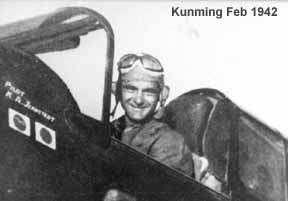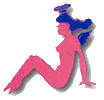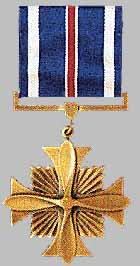Ken Jernstedt Interview 1/16/99
 Webmaster: When were you born?
Webmaster: When were you born?
Jernstedt: 1917 Webmaster: Why did you join the Marine Corps? Jernstedt: I was a graduating senior at Linfield College, McMinnville, Oregon in January 1939. Posted on one of our bulletin boards was a notice, "Become a Naval Aviator." I thought about it. My roommate was a good friend and we both decided to apply. With the Depression on and our classmates getting teaching jobs at $1,000 per year, it seemed a good idea. We both wanted to get out of state and see more of the world. Upon applying, we were first sent to Seattle for physical exam. This we passed. Then we went before a selection board of 3 ranking officers. One marine and two navy. Soon into the interview, the marine officer turned to me and asked if I would consider being a marine aviator. At that time, I wasn't aware the marines had airplanes. I said sure. I was shipped to Pensacola where I got my wings. Out of the 107 cadets, 7 of us were marine pilots. From there, I was assigned to Quantico, Virginia. At the time, the only other marine base was at San Diego.  Webmaster: What was your primary trainer?
Webmaster: What was your primary trainer?
Jernstedt: Navy N3N similar to a Stearman. Webmaster: What was your final trainer? Jernstedt: Boeing P12 or F4B4 advanced trainer. With about 450 horsepower, fixed gear, fixed prop, no flaps; it was the most fun airplane I ever flew. At Quantico, I checked out in a Grumman F3F and accumulated a lot of hours in that plane. After a few months I was sent to Guantanamo Bay, Cuba for maneuvers. And was there for 7 months, checked out on an aircraft carrier and lived in a tent. Not great conditions but OK. Webmaster: You were in Cuba when the AVG began their recruitment, how did you hear about the AVG? Jernstedt: I had been in about a year and had some leave coming so I went home. At the time, I was also transferred to Quantico, Virginia. When I returned, I learned that the AVG recruiter had been to Quantico. Everyone was talking about it. Three of my friends were interested and all four of us were qualified according to the AVG requirements. On our own, we made an appointment in Manhattan to meet with their recruiters and walked in and said, "Here we are, talk to us." It was Skip Adair who met us. Later in China, I was speaking with Skip and he was laughing as he told me, "We were having a bit of a tough time recruiting combat pilots when four of you walked in the door and were absolutely qualified. I didn't know how I got so lucky." Of the four of us, one backed out. The remaining three were myself, Tom Haywood and Chuck Older. Webmaster: Why did you go? Jernstedt: Here you have three guys looking for adventure and talking each other into it. It also meant we would have a month leave at home. I don't think anyone of us would have gone on our own. We were offered three times the money we were making. I also realized I didn't want a military career and this was a chance to break away. Also, I had sympathy for the Chinese at the time. Life Magazine had run a series of pictures of the devastation that was being wrought upon China by the Japanese. Webmaster: How did you get to Rangoon? Jernstedt: On the Dutch passenger freighter, Zamdam. Webmaster: It took you about a month? Jernstedt: Actually more than a month. We had a great trip out there. We stopped in Hawaii for several days then in the Philippines for 5 days. Borneo for several days, Surabaya in the Dutch East Indies for several days and changed ships there. Went to Singapore for a week and took a train up the Malay Peninsula to Kuala Lumpur. Then on to Port Swetenham where we boarded a real junk freighter to Rangoon. Webmaster: What were living conditions at Toungoo? Jernstedt: As good as Guantanamo. We lived in a building which was better than the tents in Cuba. Food was as good as Cuba. Webmaster: I understand some navy pilots had a problem with the army plane. Jernstedt: Yes, several PBY pilots had never flown fighters and tended to land 30 feet above the runway. Several actually turned out to be a good fighter pilots. Some of the army guys also had problems. By and large, I think the navy pilots were better pilots. I say that as a navy pilot but if you look at the AVG records, you will find that the navy pilots as a group had a better record. Over half of the AVG pilots were navy pilots. Of that group only seven were marine pilots like myself.  Webmaster: In training, Pete Atkinson was the first casualty.
Webmaster: In training, Pete Atkinson was the first casualty.
Jernstedt: Yes, that happened before I got there. Webmaster: When did you first see combat? Jernstedt: December 23 at Rangoon. Webmaster: Was Chennault's knowledge of Japanese air tactics critical to your success? Jernstedt: Yes, he told us the advantages we had over the Japanese planes. We could out dive them. If we got into a dog fight and the Japanese got on our tail, we should out dive them. We had more firepower than they did and also we had more armor plating. We had a lot better ship. As a group of U.S. pilots, there might have been an instinct of insanity in us or we might have not been out there in the first place. I don't think we were better than other US pilots, but we were there where the action was at that time. He also warned us that we would always be outnumbered and that turned out to be true. Webmaster: How outnumbered? Jernstedt: Typically ten to one, sometimes more. Webmaster: There seems to be a question about the straight and level flight speed of the P-40 compared to the Japanese fighters you encountered. There are claims that the Japanese planes were faster but Erik Shilling, for one, disclaims that. Jernstedt: The P-40 was much faster than any fighter I encountered. They could turn much quicker and we would not dog-fight them but preferred to dive away and escape to come back and make another pass from above. Webmaster: What kind of a gunsight did you have on the P-40? Jernstedt: We had a manual one and an electric one (optical) on the inside of the cockpit. The mechanical site outside of the airplane had a ring and a post like a rifle. Webmaster: The steel plating that protected you in the cockpit was located just behind the seat or did it surround you? Jernstedt: It was just behind the seat. Webmaster: Did you ever have any rounds pass through your self-sealing gas tanks? Jernstedt: You would have to ask my mechanic. I think I did. I recall I had 12 holes in my airplane after my first combat. Normally I didn't want to know. Webmaster: Most of your missions were air to air? Jernstedt: Yes, most were air to air. However, Bill Reed and I had the most productive strafing mission. I received a radiogram from Chennault that said, "Congratulations, you have set a new record for destruction." Webmaster: Tell me about it? Jernstedt: Bill Reed was a good friend of mine. A boy from Marion, Iowa. Just about my age and flying experience and also a Flight Leader. He and Olson, while we were at Magwe, were to go on this mission to Moulmein, east of Rangoon. They were wondering if there were any Japanese there so Reed and Olson were going to take a look. For some reason, Ole didn't go so Bill asked me to go. I said sure. We flew to Toungoo and stayed overnight and got up before light. We took off in the dark of the morning. We had no lights on the airport but the north star was sitting right on the end of the runway. I lined up on it, gave her the gun and took off. We got our altitude and headed south. It was fairly clear and we were at 16,000 feet. Our duty was to take a look and see what was there. Dropping down, we discovered an auxiliary airport and there was Japanese planes lined up wing tip to wing tip on each side of the single runway. We started strafing, Bill down one side while I went up the other and we kept running that circle until everything was destroyed. It was like shooting ducks in a pond. I saw a truck drive up full of pilots and all they could do was sit there and watch. Afterward, we went on to Moulmein where activity had already started. They no doubt had gotten news of our hit on the auxiliary airport. We didn't have much ammunition left but we hit a few more planes. One was starting to take off and I got him. There was one plane being fueled and I had one experimental incendiary bomb and dropped it and got that plane also. We high-tailed it for Toungoo. I don't know why they didn't follow us. We landed at Toungoo and quickly gassed up and returned to Magwe. We got credit for 15 planes destroyed. Webmaster: At $500 each? Jernstedt: Yes we got credit and paid for 7 1/2 planes each. Webmaster: Overall, how many planes did you get paid for? Jernstedt: Ten and a half. I actually got twelve and a half but it is sometimes hard to prove. The British usually confirmed our kills and they could not always find the evidence.  Webmaster: Your plane was #88. Did you always fly that one?
Webmaster: Your plane was #88. Did you always fly that one?
Jernstedt: Yes until March when it was destroyed on the ground by a Japanese raid at Magwe. Webmaster: During the seven months the AVG were operational, how many planes were they credit with destroying? Jernstedt: 296. Webmaster: And AVG losses? Jernstedt: 23. Webmaster: When your contract was up with the Chinese on July 4, 1942, what did you do? Jernstedt: I was ill before then. I was down to 145 pounds and could not fly. I asked Chennault to allow me to leave several weeks before that date and he gave his permission. Webmaster: How did you get home? Jernstedt: I was able to beg rides to and across India with Pan American. While waiting for flights in India, I came down with malaria. But I finally got a flight to Florida and a train home. I was OK after that. Webmaster: Before you left China, General Bissell, Chennault's boss, warned AVG pilots that refused induction into the U.S. Army Air corps would be drafted upon return to the U.S. What happened to you. Jernstedt: The next day after I arrived home, I applied to my draft board and they gave me a discharged veteran's rating. I was not eligible for the draft. Webmaster: But that didn't stop recruitment efforts? Jernstedt: No, An army captain flew up from California to our farm near Yamhill. They offered to make me a major. So did the marines and the navy offered me lieutenant commander.  However, my friend and AVGer, Parker Dupuoy was a test pilot for Republic Aircraft on Long Island. He convinced me to take the job with Republic.
However, my friend and AVGer, Parker Dupuoy was a test pilot for Republic Aircraft on Long Island. He convinced me to take the job with Republic.
Webmaster: How long did you work on the P-47? Jernstedt: Two years. This was an enormous fighter and the first to accompany daylight raiders all the way to Germany. It did 470 mph on the level. I thought, "Boy, I wish I'd had this in China." Webmaster: While you were testing at Republic, you had an occasion to meet Charles Lindbergh. Jernstedt: Grumman was ten miles away and when they came out with a new ship or a major change, they liked us to come over and test fly them because we were navy trained. When Grumman was in the early stages of testing the Hellcat F6 in early 1943, they invited us over. I arrived at the scheduled time and noticed that there was the name Lindbergh on the flight board.  It was not uncommon to see that name so I didn't give it much of a thought. Anyway, I was down in the washroom washing my hands and was conscious of this tall guy standing next to me and it was Charles Lindbergh. The first thing he said to me was, "Do you mind telling me what that insignia is on your jacket?" I still wear this jacket today and the insignia was the naked lady in red. I told him that was the third squadron insignia of the Flying Tigers. He said, "That was a pretty famous outfit."
It was not uncommon to see that name so I didn't give it much of a thought. Anyway, I was down in the washroom washing my hands and was conscious of this tall guy standing next to me and it was Charles Lindbergh. The first thing he said to me was, "Do you mind telling me what that insignia is on your jacket?" I still wear this jacket today and the insignia was the naked lady in red. I told him that was the third squadron insignia of the Flying Tigers. He said, "That was a pretty famous outfit."
At this time, Lindbergh was flying for Ford testing the Pratt and Whitney R2800 engine. We knew he had more time than anyone above 40,000 feet and it was in a P-47. We were interested because that was our plane. We talked to him for about 15 minutes. He then said, "Have you guys ever had a chance to look at a Corsair." We said no. He invited us out to look at his. For the next fifteen minutes, we took us on a personally conducted tour of his Corsair. We were both scheduled to test fly the Hellcat. I was scheduled to go before Lindbergh but offered to let him go ahead of me. He politely refused saying, "Your scheduled ahead of me, go ahead." I responded, "I'm only a ten mile drive away from home, you came cross country to get here. I know you would like to get out of here so go ahead." He thought for a moment and agreed and thanked me. He flew the Hellcat for about a half hour but when he returned to the field, the landing gear failed to come down. It got a bit dicey with the engineers in the tower trying to solve the problem. After the third dive, Lindy finally got the gear to drop down and was able to make a safe landing. When he came up to me, I said with a grin on my face, "Thanks for checking that thing out for me." He laughed and said someone had to do it. Webmaster: You were invited to a reception at Madison Square Gardens for Madam Chang Kai-shek. At that reception you met General Hap Arnold. Tell me about it. Jernstedt: I don't know why but he singled me out, came up and put his arm around my shoulder and asked, "When are we going to get you guys back?" First I said, "You never had me General and in the second place, you're not going to get me back." He gave me a quick look and said, "What are you doing?" I said I was a test pilot at Republic Aviation for the P-47. He said, "I guess you are doing your part." He added, "You guys were pretty good but I don't know if you realize it or not but the number of planes you shot down was not your main contribution to your country. It was the only place in the world where good news was coming from. Your main contribution was the moral boost you gave the people of the United States." Coming from Hap Arnold, I always appreciated that.  Webmaster: What was your relationship to Torpedo Squadron 8 that was devastated at Midway?
Webmaster: What was your relationship to Torpedo Squadron 8 that was devastated at Midway?
Jernstedt: I flew 20% of those TBDs in flight school. The navy was phasing them out. At the time, that was the largest single engine stick controlled plane in the world. We used them to qualify in navigation and gunnery. It probably had a top speed of 135 mph. Every time I read about Torpedo Squadron 8, I just shudder. They didn't have a chance. You could shoot them down with a 22 they were so slow. The TBF Avenger was a great improvement. Webmaster: The contribution of the AVG to the war effort was not recognized by the United States for many years. Jernstedt: In 1991 the U.S. finally acknowledged that it was behind the AVG. Prior to that, the official line was that we were on our own. Then on Dec. 8, 1996, the 17 surviving pilots were awarded the Distinguished flying Cross and a Bronze Star. I've got to be the only person to get one of those 55 years late and with a seeing eye dog. Webmaster: Thanks for your time, Ken. The country owes you and your generation a lot of gratitude for the freedoms your actions preserved. |

